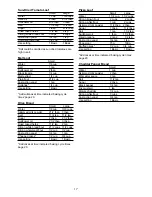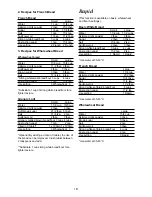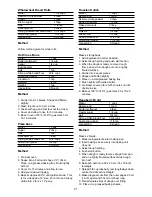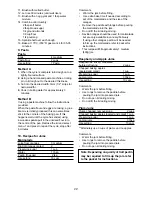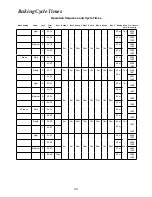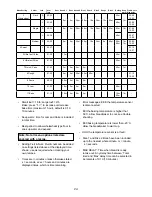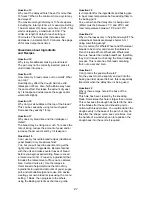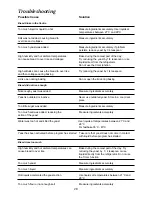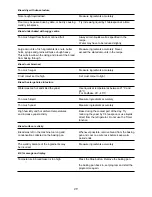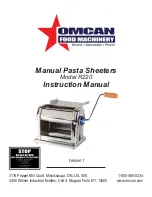
14
Hints On Measuring
Ingredients
The cup is marked in various ‘volume
measurement’ scales. The recipes in this book
use the ‘cup’ volume which is based on the
‘American cup of 8floz and is conveniently marked
in 1/16 divisions.
If you prefer to use weight (gms) as a
measurement fill and weigh the required number
of cups and record this conversion. ie)
2 cups = xx gms
3 cups = xxx gms
You must use a good quality set of accurate
scales, we prefer to use the ‘cup’ measure for
consistency and accuracy.
A conversion table is provided on page 22.
There are 2 spoons provided to cover all
combinations of quantities in the recipes.
Tablespoon tbsp, teaspoon and 1/2 teaspoon
(marked with line) and a 1/4 tsp.
1tsp = 5 millilitres
1 tbsp = 3 tsp = 15 millilitres
Hint
measure dry ingredients first with the
tablespoon, then wet (oil) last.
Your breadmaker produces delicious baked goods
with ease. This machine requires only that you
carefully follow the recipe instructions. In basic
cooking, normally ‘a pinch of this and a dash of
that’ is fine, but not for breadmakers. Using an
automatic breadmaker requires you accurately
measure each ingredient for best results.
Ingredient
Temperatures
All ingredients, including the machine and pan,
and especially liquids (water or milk), should be
warmed to room temperature 21°C (70°F). If
ingredients are too cold, below 10°C (50°F), they
will not activate the yeast. Extremely hot liquids,
above 45°C (113°F), may kill the yeast.
Creating Your Own
Yeast Bread
With the breadmaker, even the most
inexperienced baker can achieve the satisfying
experience of baking a loaf of bread. All of
the mystery and hard work is gone. Inside this
talented machine with an electronic brain, the
dough is mixed, kneaded, proofed and baked
without you being present. The automatic
breadmaker can also just prepare the dough,
and when it’s ready, you shape, allow to rise
and bake in a conventional oven. The recipes
on the following pages are ‘tailored’ for this
breadmaker. Each recipe features ingredients that
best compliment a particular loaf of bread, and
each was tested in our machines. It is extremely
important not to exceed the amounts of flour
specified in each of the recipes or else it could
result in unsatisfactory baking performance. When
creating your own yeast bread recipes or baking
an old favourite, use the recipes in this cookbook
as a guide for converting portions from your recipe
to your breadmaker. Do not exceed 4 cups of flour
and 1/2 cup fruit and nut.
Special Glazes For Yeast
Breads
Give your just baked bread a professional finish.
Select one of the following special glazes to
enhance your bread.
Egg Glaze
Beat 1 large egg and 1 tablespoon of water
together, brush generously.
Note: Apply only to doughs before baking.
Melted Butter Crust
Brush melted butter over just baked bread for a
softer, tender crust.
Milk Glaze
For a softer, shiny crust, brush just baked bread
with milk or cream.
Sweet Icing Glaze
Mix 1 cup sifted icing sugar with 1 to 2
tablespoons of milk to make a glaze consistency
and drizzle over raisin bread or sweet breads.
Poppy/Sesame/Caraway Seed/Oatmeal
Sprinkle your choice of these seeds generously
over just glazed bread.

















